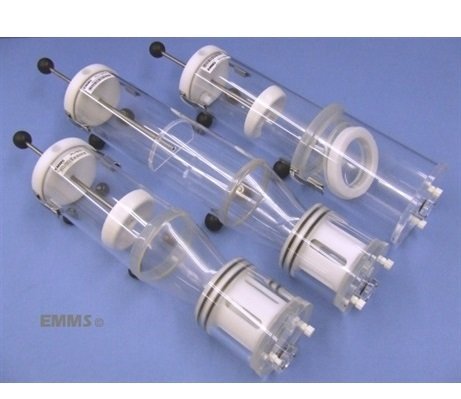取消
清空記錄
歷史記錄
清空記錄
歷史記錄


- 主站蜘蛛池模板: 欧美色穴| 黄色操视频| 日本韩国在线| 精品一区二区视频| 中文字幕在线乱人伦| 一级做a免费视频| 欧美另类丰满熟扫乱xxxxx| 国产精品一区二区在线观看| 成人免费观看国产高清| 欧美任你躁免费精品一区| 亚欧洲精品在线视频免费观看| 中国第一毛片| 色香婷婷| 男女男精品视频网站在线观看| 国产高清在线a视频大全| 51毛片| 久久成人免费视频| 色黄网| 亚洲欧美国产一区二区三区| 亚洲国产欧美在线| 国产免费一区2区3区4区| 日日爱影院| 全日本爽视频在线| 欧美日韩在线一本卡| 黄色网址在线看| 国产精品午夜在线观看| www成人在线观看| 777久久成人影院| 国产成人精品免费大全| 久久在现| 狠狠干视频网| 久久er国产精品免费观看2| 日本视频www| 手机在线毛片| 午夜视频在线观看免费视频| 欧美 video| 欧美亚洲综合视频| 欧美极品在线| 欧美巨大另类极品video| 日日综合网| 日韩一区在线播放|
無創(chuàng)雙腔肺功能檢測(cè)
Non-invasive Airway Mechanics 無創(chuàng)傷肺功能檢測(cè),雙腔檢測(cè)系統(tǒng) 公眾號(hào)
公眾號(hào) 關(guān)注我們
關(guān)注我們 產(chǎn)品詳情
產(chǎn)品詳情Non-invasive Airway Mechanics 無創(chuàng)傷肺功能檢測(cè),雙腔檢測(cè)系統(tǒng)
該系統(tǒng)使用雙腔式體積描記器,對(duì)動(dòng)物的頭部和胸部氣流進(jìn)行分別測(cè)定并計(jì)算得出特殊氣道阻力SRaw和特殊氣道導(dǎo)率SGaw。可加裝霧化給藥系統(tǒng)。

產(chǎn)品主要特點(diǎn):
可同時(shí)觀測(cè)多只動(dòng)物,適合長(zhǎng)期追蹤的研究;
SRaw和SGaw參數(shù)與有創(chuàng)方式測(cè)定的氣道阻力具有高度相關(guān)性;
動(dòng)物實(shí)驗(yàn)準(zhǔn)備較全身體積描記法復(fù)雜;
動(dòng)物完全無創(chuàng),清醒狀態(tài)下完成測(cè)試,無需麻醉;
可加裝霧化給藥模塊;
主要檢測(cè)參數(shù):
Specific Airway Resistance
Specific Airway Conductance
Tidal Volume
Minute Volume
Time of Inspiration
Time of Expiration
Peak Expiratory Flow
Peak Inspiratory Flow
Respiratory Rate
Explanations and more parameters??The EMMS non-invasive airway mechanics system uses a classic Pennock style double-chamber plethysmograph to measure nasal and thoracic flow. The animal is placed in a double-chamber plethysmograph (eg. PLY 230 for guinea pig), and is restrained in the chamber with a rubber neck collar. This neck collar also provides an airtight seal between the thoracic and nasal chambers. Flow in the two chambers is measured across two pneumotachographs in the plethysmograph wall. A bias flow air supply is used to prevent build-up of CO2 in the plethysmograph, and may also be used to pull aerosol through the nasal chamber.
??EMMS Double Chamber Plethysmographs in Conical and Sloped Front configuration.
??Parameters Measured
??· Specific Airway Resistance
??· Specific Airway Conductance
??· Tidal Volume
??· Minute Volume
??· Time of Inspiration
??· Time of Expiration
??· Peak Expiratory Flow
??· Peak Inspiratory Flow
??· Respiratory Rate
??· Explanations and more parameters
??Features
??· Up to 8 animals monitored simultaneously
??· Completely non-invasive
??· No anaesthesia required
??· Aerosol can be administered via the nasal chamber
??Uses
??· Chronic studies
??· Suitable for long-term measurements

無創(chuàng)雙腔肺功能檢測(cè)
Non-invasive Airway Mechanics 無創(chuàng)傷肺功能檢測(cè),雙腔檢測(cè)系統(tǒng)021-35183767 公眾號(hào)
公眾號(hào) 關(guān)注我們
關(guān)注我們 產(chǎn)品詳情
產(chǎn)品詳情Non-invasive Airway Mechanics 無創(chuàng)傷肺功能檢測(cè),雙腔檢測(cè)系統(tǒng)
該系統(tǒng)使用雙腔式體積描記器,對(duì)動(dòng)物的頭部和胸部氣流進(jìn)行分別測(cè)定并計(jì)算得出特殊氣道阻力SRaw和特殊氣道導(dǎo)率SGaw。可加裝霧化給藥系統(tǒng)。

產(chǎn)品主要特點(diǎn):
可同時(shí)觀測(cè)多只動(dòng)物,適合長(zhǎng)期追蹤的研究;
SRaw和SGaw參數(shù)與有創(chuàng)方式測(cè)定的氣道阻力具有高度相關(guān)性;
動(dòng)物實(shí)驗(yàn)準(zhǔn)備較全身體積描記法復(fù)雜;
動(dòng)物完全無創(chuàng),清醒狀態(tài)下完成測(cè)試,無需麻醉;
可加裝霧化給藥模塊;
主要檢測(cè)參數(shù):
Specific Airway Resistance
Specific Airway Conductance
Tidal Volume
Minute Volume
Time of Inspiration
Time of Expiration
Peak Expiratory Flow
Peak Inspiratory Flow
Respiratory Rate
Explanations and more parameters??The EMMS non-invasive airway mechanics system uses a classic Pennock style double-chamber plethysmograph to measure nasal and thoracic flow. The animal is placed in a double-chamber plethysmograph (eg. PLY 230 for guinea pig), and is restrained in the chamber with a rubber neck collar. This neck collar also provides an airtight seal between the thoracic and nasal chambers. Flow in the two chambers is measured across two pneumotachographs in the plethysmograph wall. A bias flow air supply is used to prevent build-up of CO2 in the plethysmograph, and may also be used to pull aerosol through the nasal chamber.
??EMMS Double Chamber Plethysmographs in Conical and Sloped Front configuration.
??Parameters Measured
??· Specific Airway Resistance
??· Specific Airway Conductance
??· Tidal Volume
??· Minute Volume
??· Time of Inspiration
??· Time of Expiration
??· Peak Expiratory Flow
??· Peak Inspiratory Flow
??· Respiratory Rate
??· Explanations and more parameters
??Features
??· Up to 8 animals monitored simultaneously
??· Completely non-invasive
??· No anaesthesia required
??· Aerosol can be administered via the nasal chamber
??Uses
??· Chronic studies
??· Suitable for long-term measurements
更多推薦 選擇區(qū)號(hào)
選擇區(qū)號(hào)


 瀏覽器自帶分享功能也很好用哦~
瀏覽器自帶分享功能也很好用哦~



